How much pyrrolizidine is too much? Or perhaps the better question is how little is too much?
First, what is pyrrolizidine? Pyrrolizidine (pie-row-LIES-ah-dine) is an alkaloid which is a chemical many plants make that is incompatible with mammalian and avian life. Basically it is how those plants, as a group long-term, keep from being eaten into extinction. It’s a strategy of Eat Us And You Die. They do that by damaging the liver.
Pyrrolizidine through low-level, long-term use can cause veno-occulusive disease (it clogs up small veins in the liver causing fluid retention.) Large amounts can also bring on quick and acute symptoms. A 49-year old woman affected by it was taking comfrey-pepsin pills for four months with an average daily dose of 15 mg per kilo of body weight. And while I refer to pyrrolizidine in the singular there are several hundred in as many plants but they act in a similar way.
Most of the plants with pyrrolizidine we don’t eat. However, there are six we should concern ourselves with. Two are used a herbal medicines, one is used as a potherb, one as a potential potherb, one as a spice, and one is a tempting look alike for an edible.
I became interested in pyrrolizidine when I realized that three local plants in my area had it. One is definitely toxic, Senecio glabellus. The plant caught my attention because it has a similar season as wild mustards/radishes and from a distance resembles them. A closer look at the blossom shows it clearly is not a mustard. The petals are all wrong, daisy-ish not a four-petal cross. But its fleshy leaves lobe like a mustard and look very tempting. Odd to say but the plant just plain looks like it should be edible. It is not. Its flavor is good (note I did not consume it. I tasted it, a different activity by far. DO NOT EAT IT.) It is also well-armed with pyrrolizidine, some 0.2%. In lab tests it kills rats. That got pyrrolizidine on my mind.
It arose again when the question was asked is the Florida Tasselflower edible, Emilia fosbergii. I know someone — late 20’s — who has tried its leaves once with no apparent ill-effects. It was a few leaves raw, ten if I remember correctly, but not a steady diet of said, which appears to be important. Its relative, Emilia sonchifolia, which also has pyrrolizidine, is a common green in Java. Leaves of the not-yet-flowering plant in Java are eaten in salads, soups or steamed, most commonly used as a side dish. I know of a woman not yet 30 who ate many Tasselflower blossoms as a child while playing with her dolls. She has on-going liver issues.
Our next local plant with pyrrolizidine is Dog Fennel, Eupatorium capillifolium, often used as external medicine and a good fire starter. I never considered it an edible until I heard of park rangers in the Everglades using it as a spice in their salads. Then I had two students — again in their 20’s — who told me for years they had been mincing the hair-thin leaves and adding them to mash potatoes for flavor. As a spice, or an occasional green, perhaps some pyrrolizidine can be tolerated but still is not wise. (I mention age only because I have many decades of enjoying dry red wine behind me so who knows how my liver might react to some pyrrolizidine. I avoid it.)
The two other common plants with pyrrolizidine are comfrey and anything in the Borage family. Borage is on the German Commission E’s list as “unapproved” though the total alkaloid content is very low, less than 0.001%. Comfrey has been blamed for liver damage in humans and at least one infant death. It’s alkaloid content varies but is around 0.25%
Another plant used more in the past than now is the dye alkannet/alkanet, once used for lipstick coloring and in the greater Borage family. It is 0.12% alkaloid and is available over the internet. Other common plants with pyrrolizidine are Coltsfoot and Forget-Me-Nots.
As foragers the issue of toxicity is a relevant one. Yet toxicity is more a continuum than a line in the sand. Onions have some pyrrolizidine, comfrey a lot, and not all forms of pyrrolizidine are toxic. You can poison yourself with onions, though it is not easy. Then there is daily dosage. Is comfrey tea once a year bad? How about some dog fennel as a spice or Emilia as an occasional side dish? Between totally safe and totally toxic sometimes there is a fog bank.
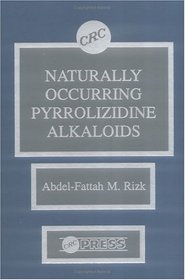 As one might infer pyrrolizidine is a significant issue with livestock, particularly in northwest United States where pyrrolizidine can also work its way into cows’ milk and chicken eggs. Plants with pyrrolizidine can also contaminate human crops, such as grains. A 25-year-old book on topic, Naturally Occurring Pyrrolizidine Alkaloids, sells for (at this update*) $450 not including shipping. For more information and a list of common plants humans might run into with pyrrolizidine click here.
As one might infer pyrrolizidine is a significant issue with livestock, particularly in northwest United States where pyrrolizidine can also work its way into cows’ milk and chicken eggs. Plants with pyrrolizidine can also contaminate human crops, such as grains. A 25-year-old book on topic, Naturally Occurring Pyrrolizidine Alkaloids, sells for (at this update*) $450 not including shipping. For more information and a list of common plants humans might run into with pyrrolizidine click here.
*When I first wrote this article in November 2011 the books was selling for $375.

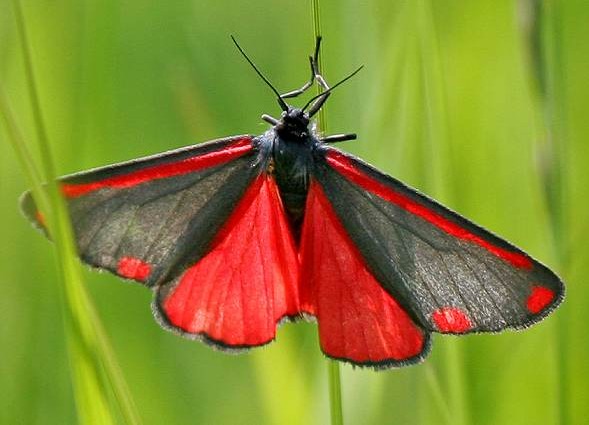
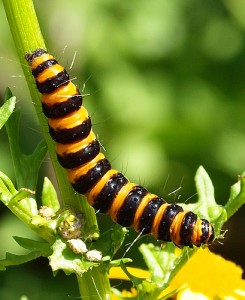
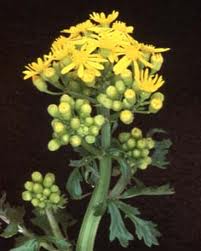
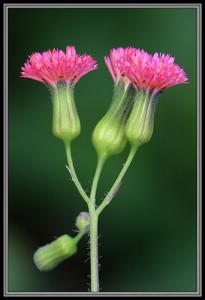
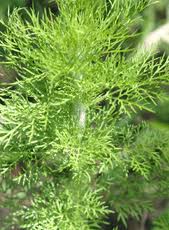
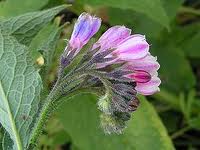

Hi Deane,
I love the new site – fantastic.
I’ve been eating comfrey in small amounts for years. Great source of nutrition, for sure, though I know there are minor doubts about its safety. “Continuum” is right. A wide range of mild plant toxins isn’t likely to knock anyone off… and may in fact make us stronger by stimulating the system and warding off parasites. I’ve heard that when some animals ingest a range of plants and their accompanying alkaloids in moderate amounts, it’s good for the animal and in fact makes them healthier. Great article… I always enjoy your insight.
LOL The Seminoles used Dog Fennel for an insect repellent according to Reid F. Tillery “Suviving the Wilds of Florida.” They would use the crushed stringy leaves smeared on the skin and put it on a fire for a smudge fire. I have used it for that with varying results. Not 100% effective that is for sure but I do believe it does help applied over one hour intervals. It has worked better for me than crushed Beautyberry leaves. Sure beats mud or nothing when the skeeters are biting.
Dead and dry Dog Fennel stalk has worked for me as a spindle for friction fire but so far only on old seasoned pieces of pine that is resin and water free (not rotten). Pine is tricky to use so the right piece must be found if using it for a board and that just takes spending time and practice getting to know what will work. After many coals, I still make mistakes with pine and have failures if I am not careful.
Oops. That’s “Surviving the Wilds of Florida.” Sorry.
Fascinating article. I became aware of my severe allergy to dog fennel many years ago after taking a short hike through a field thick with the plant in full flower. Within minutes of passing through the area I had the most intense hayfever symptoms one could possibly imagine – absolute misery! It is interesting to learn that some people regard it as edible. I do not plan to give dog fennel a taste myself. I’m like you, middle-aged with a long history of drinking wine. I appreciate the warning about plants containing pyrrolizindine.
Another great read, Thank you
When I first spotted dog fennel growing in my garden in the spring, I thought it was dill and took a nibble. The taste suprised me not only because it had no resemblence to dill but because it was sweet and delicious. Since it didn’t kill me or cause any obvious negative symptoms, I figured it was probably ok to eat but wanted to find out more about it. Finally, this fall, I identified it as some variety of dog fennel but instead of stinking, it smells like parsley. I’m wondering if the variety I found is less toxic than the stinky one. I would dearly love for this to be edible.
My experience thus far with plants that don’t seem to quite be identifiable, and taste good, is that they are edible. Being bitter is a minor warning. Being astringent is a huge warning sign. But thus far, all of that plants that tasted good to me were safe for me to eat.
One thing I find really helpful is to go into a meditative state before trying a plant. Feel your entire body, eyes closed, deep breaths, and search your body for every sensation, every bit of tension, every temperature change, and so on. Then try the new plant and as you chew it, seek your body for reactions.
Fruit often causes my throat to tingle, especially strawberries. That, for me, is a good thing.
When something doesn’t agree with me very well, often it’ll make my saliva turn sticky and bitter in my mouth, while causing me to produce extra saliva.
Not that I’m suggesting using this method for plants you have no clue about. But this plant that you have that looks like dog fennel isn’t highly toxic even if it is dog fennel, so I would consider it safe to use this method to discern whether or not it is right for you.
I’ve been using this technique with a number of plants that don’t quite match any description I find online, but don’t have any warnings about being seriously toxic or having really toxic look-alikes.
i have heard that poisen hemlock tastes good.. theres some adcounts off people describing it in the minutes before they die (taking it for suicide purposes). if a plant is really toxic, and it tastes good, the person that dsies most likely will not be able to tell it forward.. just saying 🙁
Seems like a real lazy and dangerous way to check on your (in)ability to identify plants. Yikes. Don’t try this at home.
“Hmmm, I can’t quite tell what this plant is… might as well eat it…” smh
Good point, but no need to be rude, imho.
New to NC, this is the first year of my life I’ve seen dog fennel and when I first saw it it was small and young. I took a little taste because I do things like that with plants…. (I don’t ever advise that anyone ever should.) When it was young it tasted sweet, almost like a sweet dill or fennel!
I left the plants alone for awhile and when they were more mature I took another small taste. It didn’t taste sweet this time. About 5 minutes later I started coughing, and a itchy rash broke out on my chin.
I’m also middle aged and have definitely not pampered my liver over the years.
Glad to hear about the insect repellent properties though! Thinking of mulching the garden with it!
I applaud the person who is meditating with the plant. How do people think we know about so many plants and their uses? Of course it’s not for everyone, but before commenting that someone is lazy or stupid for trying a plant, consider who ate the first egg.
Thanks for your article about plants containing pyrrolizidine. I have so much Emilia fosbergii in my yard. I was trying to figure out what it was, the leaves look so much like your sow thistle with auricles, but the flower was wrong. This is causing me some concern because my pet rabbits and my laying hens love that plant. When I carry in greens and wild plants for my chickens they always go after the Emilia first.
My chickens are very well fed, they have many choices for greens every day. Would they consume poison greens with so many other green choices?
Animals can eat things we can and we can eat things animals can’t. This is why one never assumes that what another creature can eat we can also.
I desperately want dog fennel to be edible. I tried a taste today and its delicious in my opinion. How would one go about experimenting with its edibility? Could I just eat a little and keep increasing every day and just monitor how I feel? I suppose this is how all creatures in nature do it. We should be able to rely on our own senses to figure this stuff out.
Don’t eat it.
I was looking around today to find possible edibles. I was thinking the new round plants might be yarrow, and tasted a tiny bit. It was sweet and good. I picked a handful and come in to ID and promptly trashed it, but it is sad. It was tasty.
Yarrow has some medicinal uses but not often.
Thanks for the discussion. It grows ‘naturally’ in great numbers and is considered “that old” (bad talk about anything) around here. I am much more enlightened thanks to this post and several others I got when I googled ‘uses for dog fennel’. God’s Best to each of you. . .
I just wanted to leave you a thank you note for your info. I searched a long time online for reliable info on whether Eupatorium capillifolium Feather, is edible or not. As you mention, I read that some people who suddenly find it cropped up in their yard, as I did, use it to dill pickles and spice foods with. I did smell and then taste it very carefully, and it does smell and taste like dill. But before actually adapting it as a food, I wanted to research it. Your reliable, rare and wonderful web site suggests NOT to ingest it, and I won’t. THANK YOU! Liver problems I do not need. Be well. And Thanks again.
Love your site and am definitely following in your mighty big footsteps, but I came across this on what I consider to be a very reliable site, and it suggests that dog fennel is not only edible, but beneficial for some things. I’ll write back if I die. 😀
With apologies, I have edited out the website reference because I think it would be irresponsible of me to allow anyone to think I approve of the consumption of dog fennel. It has very limited medicinal uses internally and even then only rarely — only once every five years or so. It should not be eaten. The damage done by pyrrolizidine alkaloids is irreversible. It usually does not show up for months or years. The affliction is permanent. If you find someone (healhty) who has eaten it regularly over time please let me know.
If you contact the writer of the book” herbs are special
http://www.herbsarespecial.com.au/free-herb-information/comfrey.html you will find out that the writer of this book has been on them for years and years plus she gets a lot of feed back from people who are elderly and have used comfrey for years, her book was written with the aid of the aid and help of health professionals.
I have a friend who pounded down the comfrey for a month or so before undergoing back surgery. She’s still alive and kicking. I thought that comfrey had been exonerated.
I used it externally on an ankle that had been sore for a long time and the pain was knocked out by 50% after one application. I pureed the leaves and applied as a poultice.
This is worth a read:
http://www.herbsarespecial.com.au/free-herb-information/comfrey.html
excerpt:
“Andrew Hughes, in his most informative book, ‘Comfrey, nature’s healing herb and health food’, printed in 1991, says, “The safety of comfrey has been proved by thousands of people, who, like myself, have taken comfrey regularly, on a daily basis. There is no known case of the ingestion of comfrey leaves causing hepatic illness, in either man or beast. If the warnings, given by Dr. Culvenor of the CSIRO, were to be taken at face value there would have been hundreds, even thousands, of victims of hepatic poisoning amongst comfrey eaters, both human and farm animal. My bi-monthly, regular check-up at the clinic, has given me a clean sheet of good physical condition – blood analysis, blood pressure, chest, bowels, etc., and I engage in both physical and mental activities every day”. Andrew shares in his book how he and his wife Tomoko, have been taking comfrey in tablet form, for 28 years, amounts from 85 to 135 grams daily. At age 89 (when most senior citizens are retired) he was working fulltime, working in his garden and walking, for an hour or more, daily. Although Australian by birth, his work took him internationally and he lived for 33 years in Japan (before returning to Victoria). I had the opportunity to speak to him, numerous times, by telephone and came to appreciate the extensive research and knowledge he had on comfrey. Andrew’s first knowledge of comfrey came in 1956, from Foster Savage: a great advocate of the herb in agriculture, who at that time was farming in Victoria. Once Andrew settled in Japan, he arranged, with the Japanese Department of Agriculture, to import 50 plants from Foster Savage. This was the beginning of a ‘great adventure’, with comfrey, in Japan: with extensive trials, testing, and interest, by the Japanese Government. When Andrew went to Japan, in 1957, he had little thought that comfrey was to become a matter of major importance to Japanese agriculture. He did not plan it that way, but circumstances provided the opportunity. He was invited to speak to farmers, schools and research groups. Farmers quickly realised the value of comfrey, for it added, enormously, to productivity. Andrew was interviewed by the Yomiuri Shimbum daily press, who saw the potential of comfrey and with a vision, planted up a vast park-playgroundgolf course they owned, on the borders of Tokyo. Once established, they gave away over 1,000,000 comfrey offsets (root divisions) to schools, agricultural co-operatives and private people, who wanted to grow and test the plant. That was just the beginning of the comfrey boom in Japan, and also the beginning of the realisation that the plant could also contribute to human health. Comfrey was not only fed in large quantities to animals producing high-quality table meat, but it was also incorporated into many items of cuisine. Andrew was grateful to the U.K. Henry Doubleday research that had many years of documented information, freely available, that showed data of high concentrations that could be fed to animals (some were 50-80% of daily fodder). He also found that extensive documented research was available, on comfrey in human diet, as a health-promoting tea, green drinks, leaf vegetable, dry leaf flour, as well as uses for reversing many ailments. Comfrey had been esteemed as a blood purifier and healer. Trials undertaken by Henry Doubleday Association members, also showed that it is a valuable plant for pain relief. I have reports submitted by Dr. S. J. L. Mount, Berkshire, U.K., who supervised the trials in 1983, testing 90 members with osteoarthritis and rheumatoid arthritis. Members took comfrey, as either 4 cups of tea or 9 tablets, daily. Dr. Mount reported there were no side effects from this dosage, whatsoever, and no reports of any symptoms, which could be construed as liver syptomatology. Patients reported improvement in well-being, with 23-35% pain relief and mobility.”
That book was published long ago and most of the restrictions imposed were recently in Europe.
Thank you for providing that link Laurel.
This plant was food and medicine for thousands of years. It’s probably one of the better plants to have around.
Hi Deane,
My wife and I are cautious but enthusiastic foragers. We winter in North Port, FL where we enjoy frequent nature walks led by local knowledgeable volunteers. A few years ago, after hearing that dog fennel was commonly used beneath ‘fish on the grill’, I decided to substitute it for 2 tablespoons of dill weed in a fish loaf recipe. I made the fish loaf (two cans of salmon). Only then did I decide to confirm the edibility of dog fennel. I stumbled upon your site…and discarded the fish loaf without eating it. I then shared this story with the many friends that join the nature walks. Since then, whenever we walk by some dog fennel, someone laughingly reminds me of my culinary near-mishap. Thanks for a wonderful site…and for protecting my liver.
It is a good thing to put the details of any known comfrey and borage deaths if one is going to say there have been known deaths, for example how did a baby die from it. Proof!
I have been making comfrey oil for ages for my skin and cold pressed soaps and they are amazing and have moved all my aged spots on my hands and legs. The tea from the leaves are the only natural thing I know that removes vagina irritations within minutes. Many old people I know in the farm area I live in have told me they have eaten comfrey when they were growing up in the 1940’s and still do. I do not use the root because I get the good healing from the leaves. My ponies love it and eat it right back to the soil. The essential oil wholesale companies in Australia now sell comfrey oil under the headings of ‘healing oils’ at $35.00 per 100 mls.
If you are concerned about drinking comfrey tea the you can take extract of milk thistle which protects the liver and is a known healer for mushroom poison 🙂
Healer for mushroom poison?? Really?? I don’t mean to insult anyone but is that really possible? It sounds like a very broad statement that I wish no one would read. There are som many different toxins in different mushrooms that I must know wich one it heals the effect of. Most posts, albiet some, are talking of oils and extract used as lotions and external things. Although our skin does absorb it is not to say that ingesting is a completely different thing. Alcohol is not great on the liver, WE ALL KNOW THIS, yet look how long it takes to deatroy one. Is it not possible that ingesting many to most borages are the same. Of corse I would not include all.
Curr Pharm Biotechnol. 2012 Aug; 13(10): 1964–1970.
Published online 2012 Aug. doi: 10.2174/138920112802273353
Legalon® SIL: The Antidote of Choice in Patients with Acute Hepatotoxicity from Amatoxin Poisoning
Ulrich Mengs,a,* Ralf -Torsten Pohl,a and Todd Mitchellb
Not a perfect cure, by any means, but given timely, it does help. Unfortunately, either not avail in USA or was taken off the market mainly because of expense I think.
At this point aggressive hydration and draining the bile out of the gall bladder to outside of the body -if done timely, is the most practical treatment of choice.
treatment if choice for amatoxin that is.
I also forgot to add in my comment that here is Australia, comfrey and borage are banned as a use for medicine BUT you can eat as much of it as you like as a food, in fact some restaurants serve it in salads.
I was very concerned about the toxicity of this plants because of the newsletter “Pyrrolizidine on my Mind”, talking about the Pyrrolizidine content of both Emilias. I have been eating a lot of them for years in Brazil, where I live 5 months per year.
So, I searched in PUBMED ( the place where medical doctors look for validated information) and I only could find protective effects of this plant, and couldn´t find any bad liver effects in the bibliography.
https://www.ncbi.nlm.nih.gov/pubmed/?term=Emilia+sonchifolia
Maybe I didn´t find the right place for the toxicity effect, and I wish I could read more about it. Thank you.
I have neen so curious about Dog Fennel as a possible herb. I heard people use it to flavor fish. I always check Dean Greens site before i try anything. After reading of it’s dangers i am over the desire to try it’s edibility. Even if it could be edible and not hurt me right away i would nit want to find out years later that it hurt my liver. I am more curious to use it as a pesticide somehow especially for mosquitos. I wonder if it is safe to use on vegetable plants? Thank you for all your work and research Mr. Dean Green. Mike Turner new transplant from Fort Lauderdale to Palatka Fl. Park Ranger, gardener at The Ravines.
It shouldn’t bother other plants.
How many times does mr. Deane have to say it? DONT EAT IT, it’s just that simple and not hard to comprehend. You asked the expert and he told you NOT TO EAT IT.
I remember eating Coltsfoot rock – a coltsfoot-infused sugary confection – in Dewsbury, in the UK. This was to distract me from biting my nails – didn’t work. I wasn’t poisoned by it, and I don’t know anyone else that was poisoned by it, but, of course, you cannot derive evidence by heresay. What is your view on this?
I would think that there is a world of difference in putting a frond of dogfennel under apiece of fish when baking and actually eating it. One does not eat the fig leaf that is wrapped around fish , nor do they eat the cornstalks that tamales are steamed in. They are like bay leaves , there only for the flavor.
I just found some dog fennel in an old garden of mine. It looks like dill at first glance, but the stalks are furry, and grow outwardly a little differently than dill. The tiny leaves smelled like dill, but I thought it did look a little more like a fennel. I found your article while trying to identify it. Thanks for the information!
Hello I ate one small leaf of the senecio glabellus, what amount does it usually take to hurt a person?
More than that. But don’t do it again.
I went to the Florida Herbal Conference and was given a recommendation by Susan Weed to drink quart sized concentrated doses of comfrey tea once a week. She recommended a sequence of Oat Straw, red clover, nettle, and comfrey, alternating daily. She gave no disclaimer, and I did this for months. Luckily I looked it up one day and stopped immediately. I learned a lesson to always do my own research.
I heard you could boil down dog fennel And apply to your skin and where are you got a ringworm a parasite and it will kill it, is this true?
OrMaybe I should just mash it up real fine and use it full strength. All comments would be appreciated, thanks
I was introduced to Dog Fennel some time around 10 years of age. I was taught to use it as a breath mint. Chew it and then spit it out.
I am 62 years old. I have done this off and on for almost every hike I had if I pass by it. I have never consummed it as a foraged food source. I may have swallowed some once or twice. I do have a mildy fatty liver but Dr dismissed it as typical for southerners. How ever I have been vegetarian my whole life.
I just learned about the toxity of this plant tonight and wanted to thank you for your Information.
“Inhale this but do not touch, I smell nothing.” What you do not smell is called Iocane powder. It is odorless, tasteless, dissolves instantly in liquid, and is among the more deadly poisons known to man. Vizzini: Hmmmm. I will put the poison in one of our glasses. The game begins now and ends when you decide and we both drink………..To think, the poison was in your glass the whole time. They were both poisoned, Over the past years I have built an immunity to Iocane powder.” LOL. Im sure there is a hybrid strain by now too. Every plant is a poison and a cure in different amounts. A computer was asked Which plants can be made into medicines? The computer said all of them and none of them.